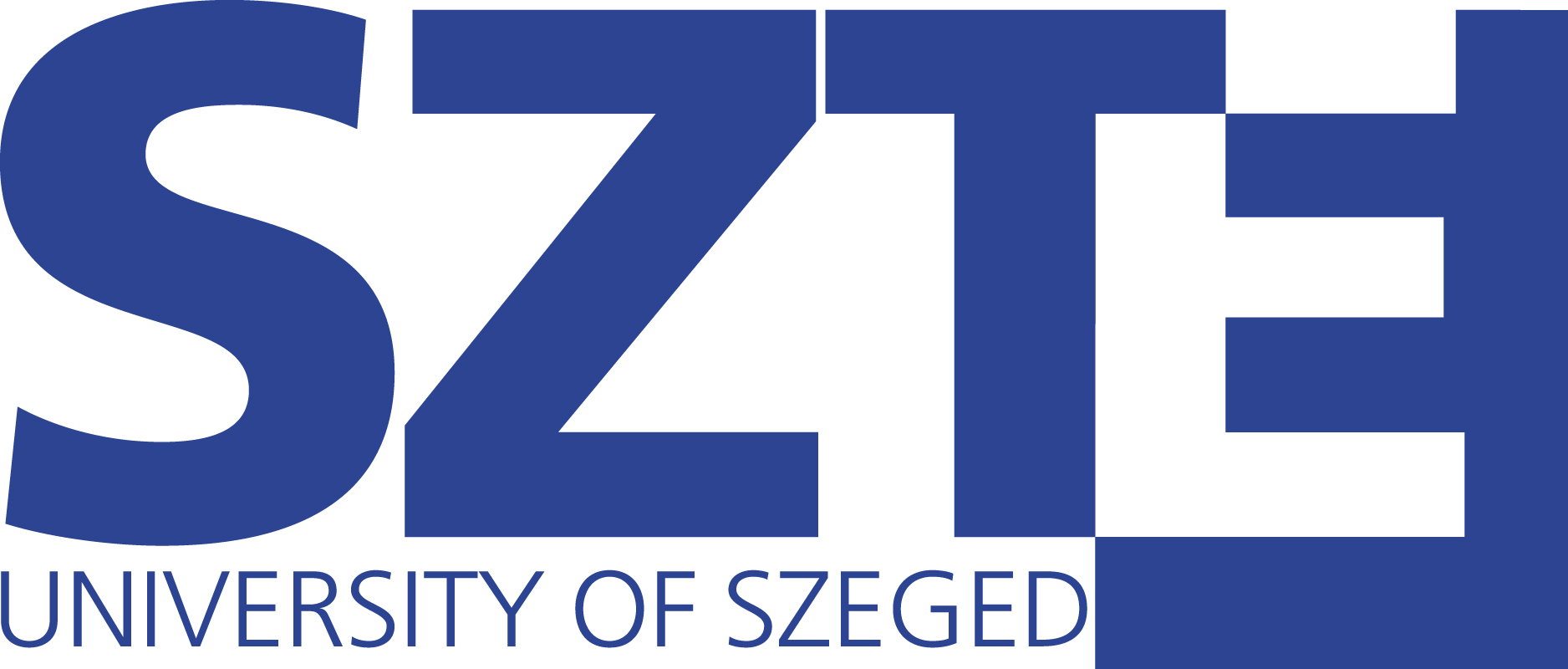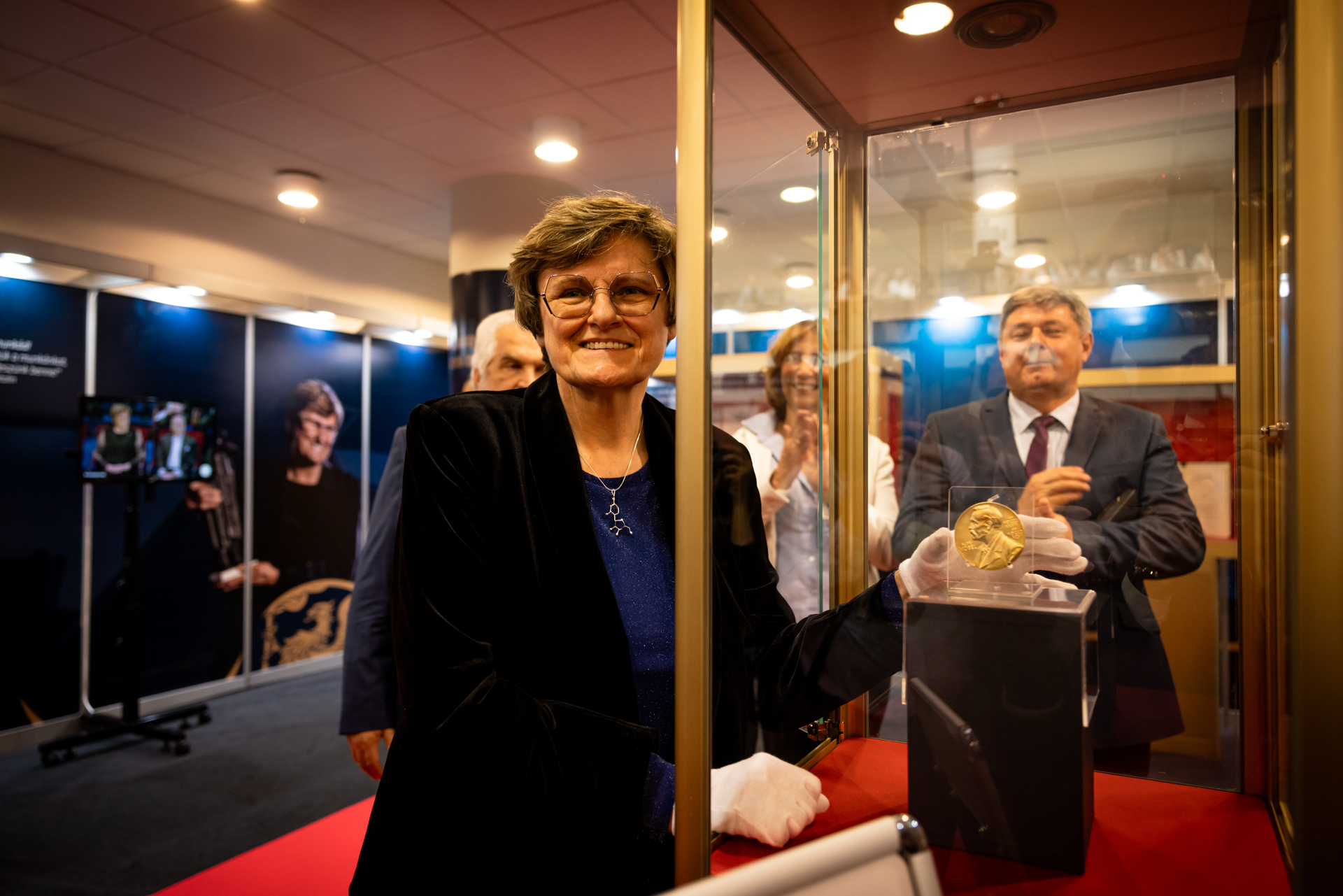
From now on, the Nobel portrait plaque representing Katalin Karikó's Nobel Prize is on permanent display in the dedicated exhibition hall of the József Attila Study and Information Centre of SZTE. The Nobel Prize-winning professor of the University of Szeged announced at the welcoming ceremony on April 16, 2024 that she would donate the authentic replica of her 24-carat gold-plated Nobel medal to the university.
Katalin Karikó's research journey to the Nobel Prize is presented in an exhibition at the Klebelsberg Library of the University of Szeged, surrounding her Nobel plaque. The precious coin, an authentic 24-carat gold-plated replica of the Nobel medal was placed in its place half an hour after Katalin Karikó announced that she would donate her Nobel Prize plaque and more than half a million dollars that came with the prize to the University of Szeged. The special exhibition was opened by Prof. Dr. Gábor Szabó, President of the Foundation for the University of Szeged, in the presence of Katalin Karikó, Nobel Prize-winning research professor of the University of Szeged, Prof. Dr. László Rovó, Rector of the University of Szeged, Dr. Judit Fendler, Chancellor of the University of Szeged, and the entire audience at the ceremony, including many pupils and students.
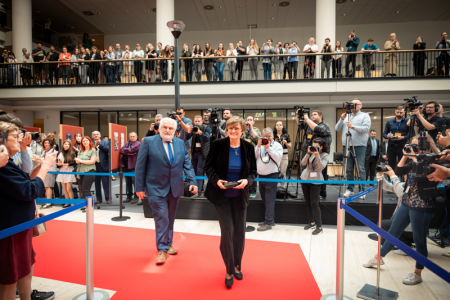 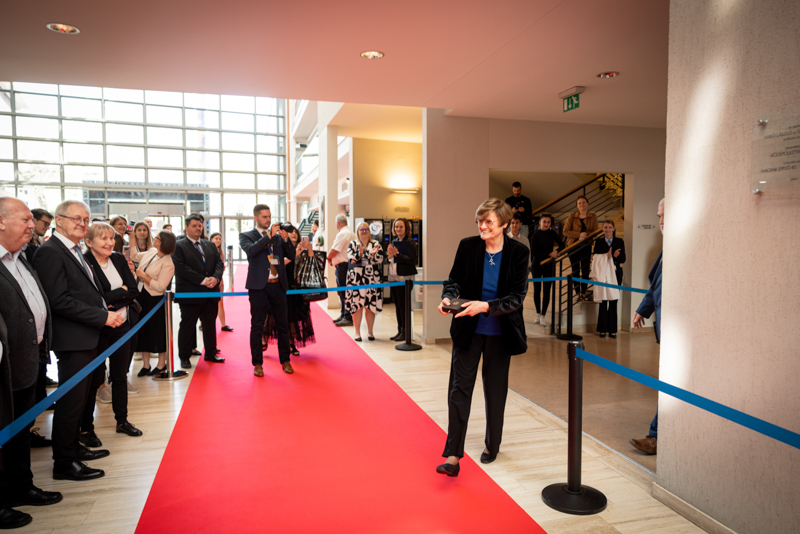 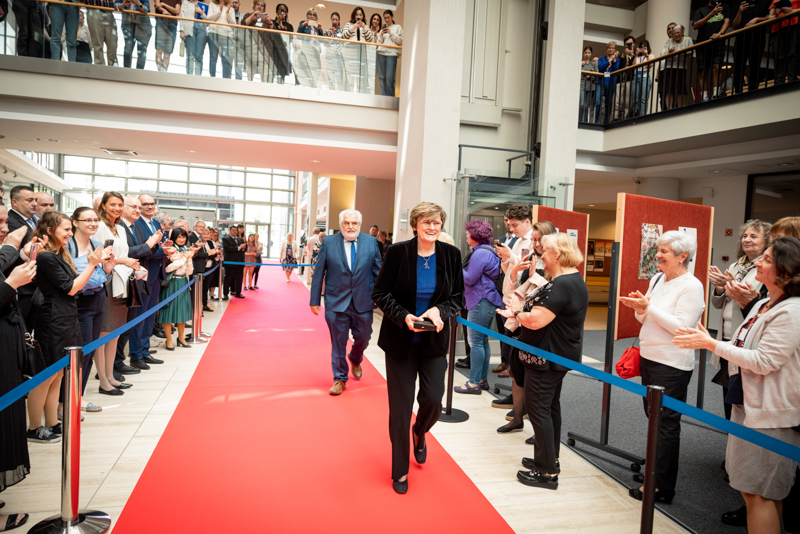 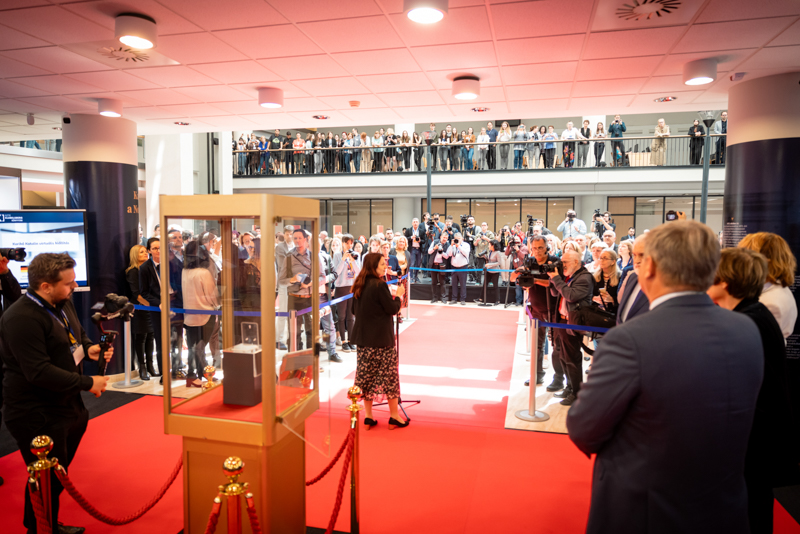 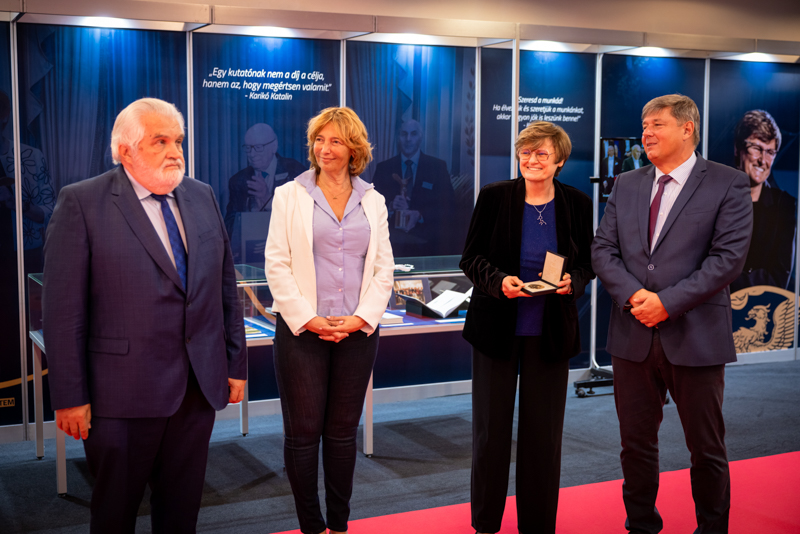 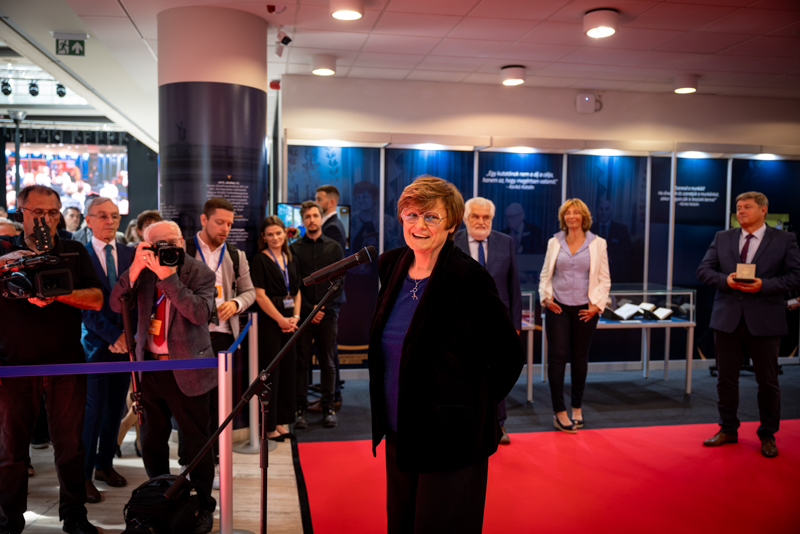 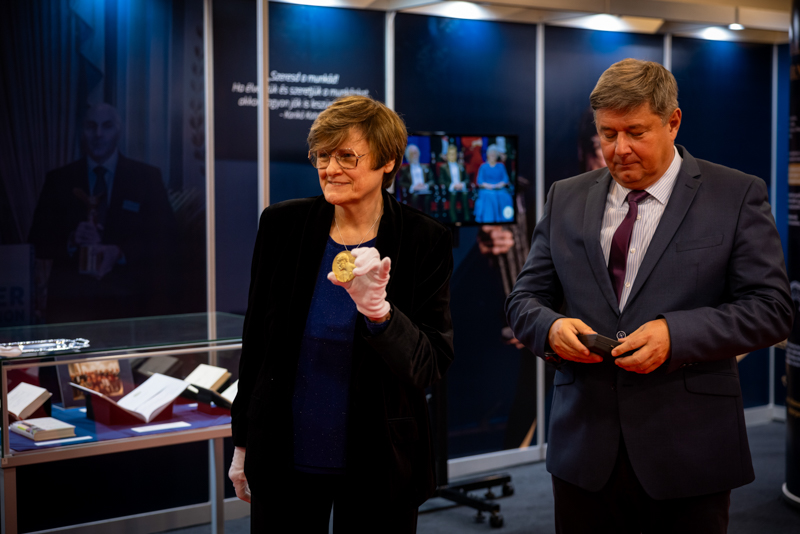 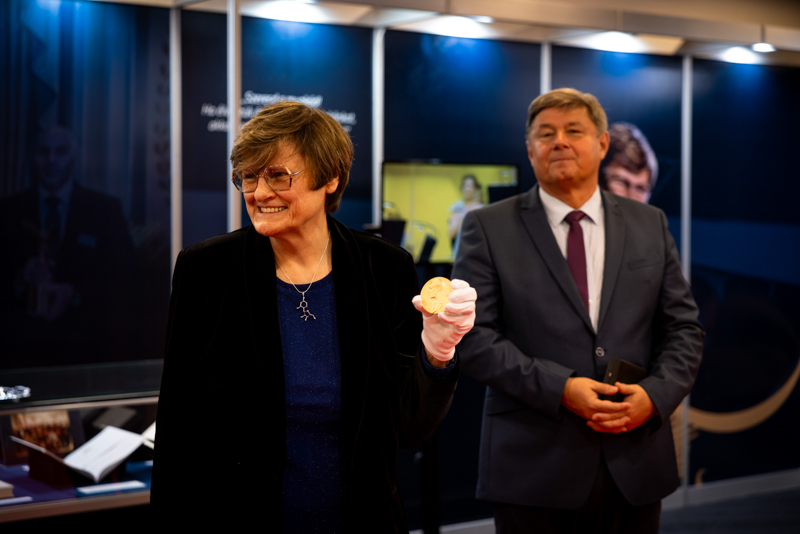 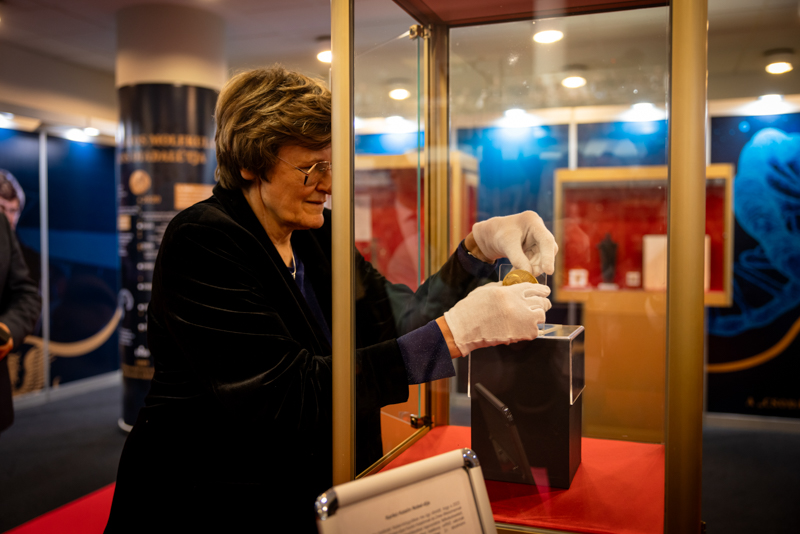 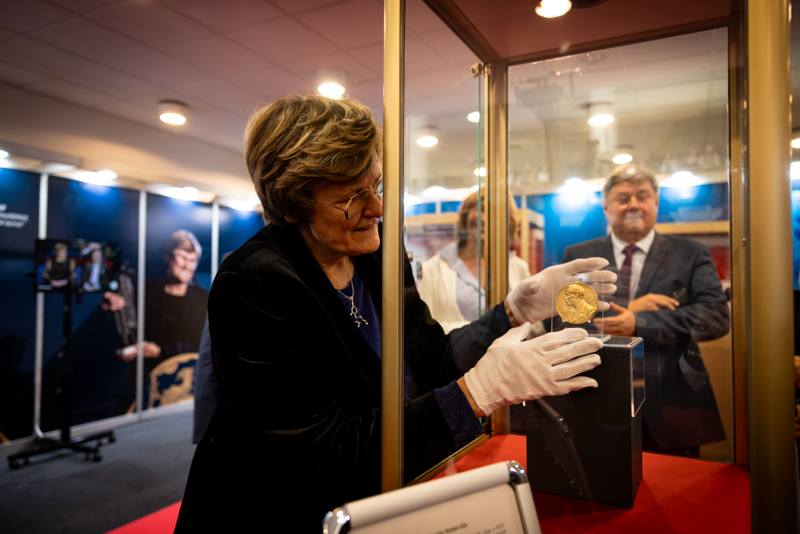 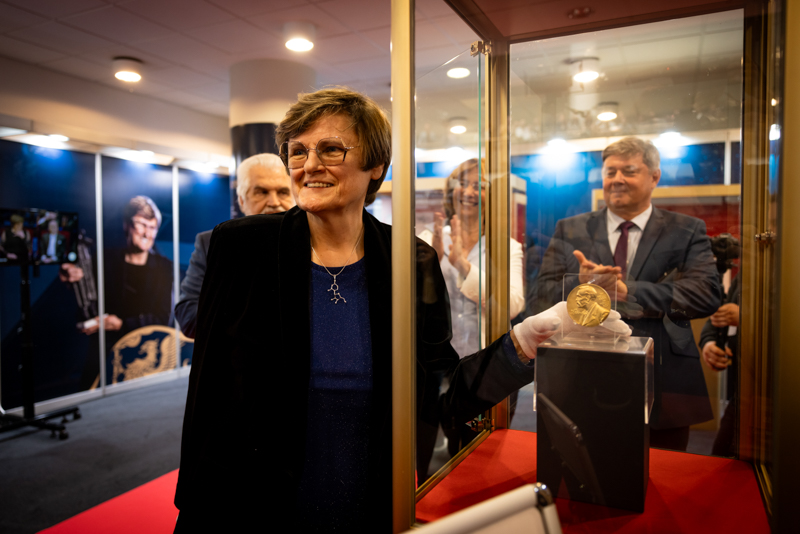 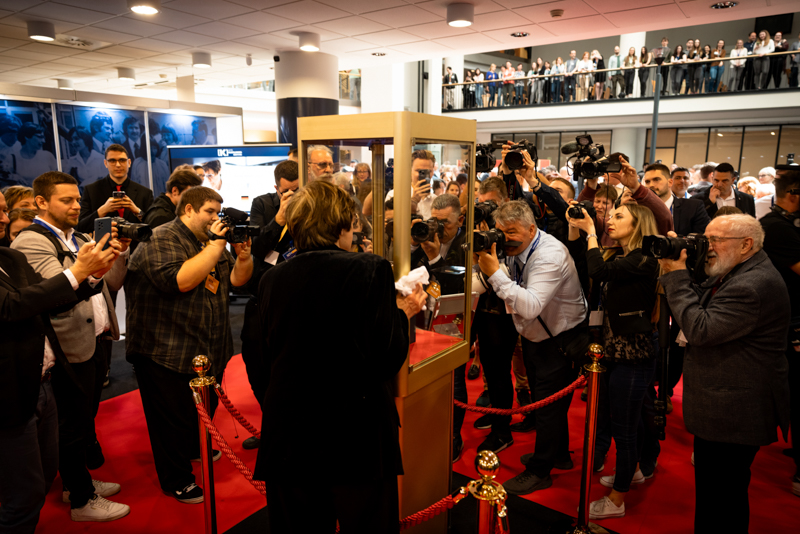 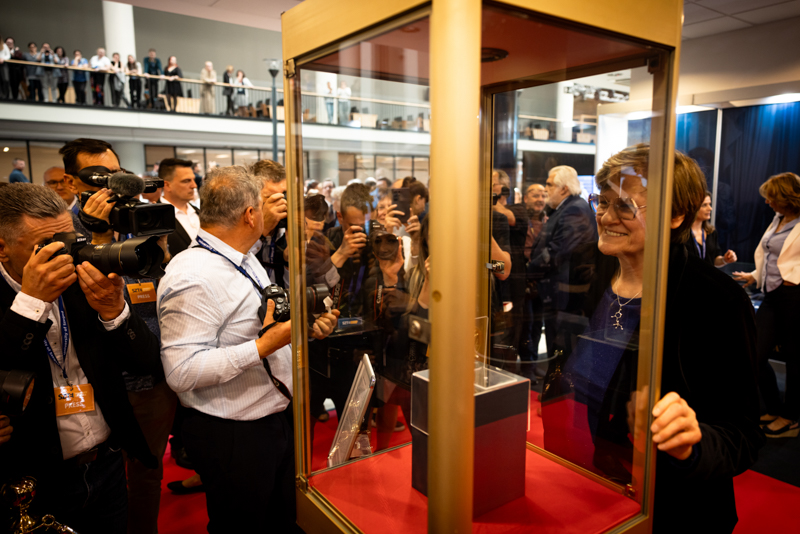 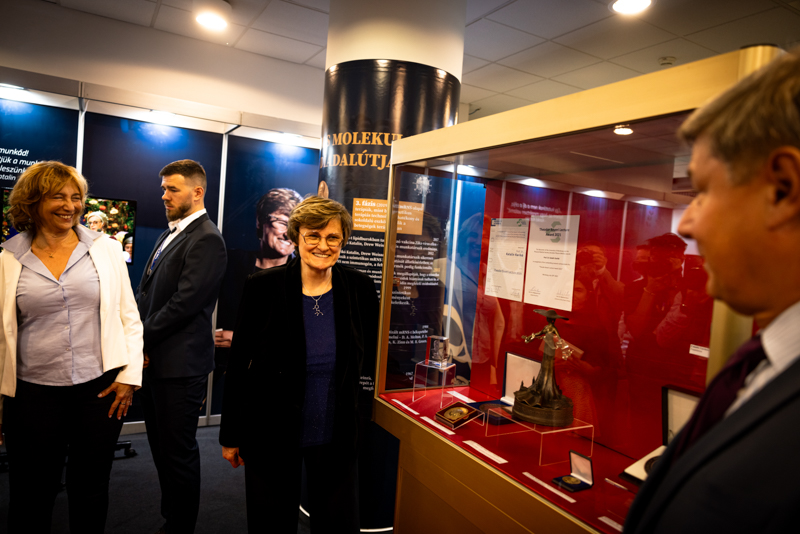 |
| Katalin Karikó has placed the authentic replica of her Nobel medal at the permanent exhibition. GALÉRIA |
- Dear Professor, or rather, dear Kati," began his speech Prof. Dr. Gábor Szabó. - Our acquaintance goes back to a rather intense period in our lives, when we were both students at the university. Kati herself was very active in student life, so we met several times at various events. The university years are a very intense period in one's life, but they provide a good basis for those who are trying to imagine the road ahead, which is what this exhibition is all about.
- Kati's book is like a time machine for me, as I can recall exactly the same memories she writes about at the beginning. After the university years, events accelerated quite a bit, first there was the change of regime and then many other things; you only have to compare the university of that time with the university of today. When we were students, the number of students at JATE was smaller than it is today in some of the larger faculties of SZTE. What was once a small university with a family atmosphere has now become the university we all see here, with facilities such as this building, the library of which was voted as one of the 50 most remarkable university libraries in the world by students.
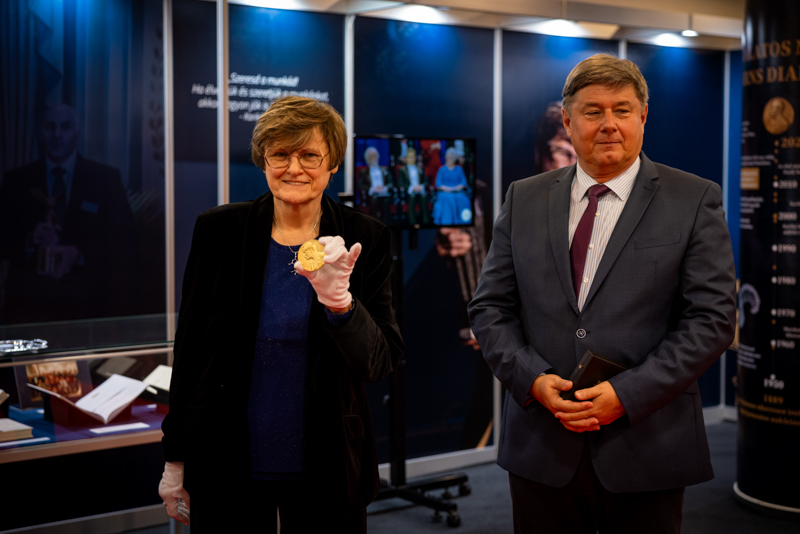
According to Prof. Dr. Gábor Szabó, the changes in the outside world have led many people to deviate more or less from the path they had previously imagined. Katalin Karikó is special in this respect as well, because, no matter what happened around her, she knew what she wanted to do from the very beginning of her years at the Szeged Biological Research Centre. She felt from the start that she could help people with the technology she was working on. These two ideas led her down a path that many people would have abandoned in search of something else," said the former two-time rector of the university.
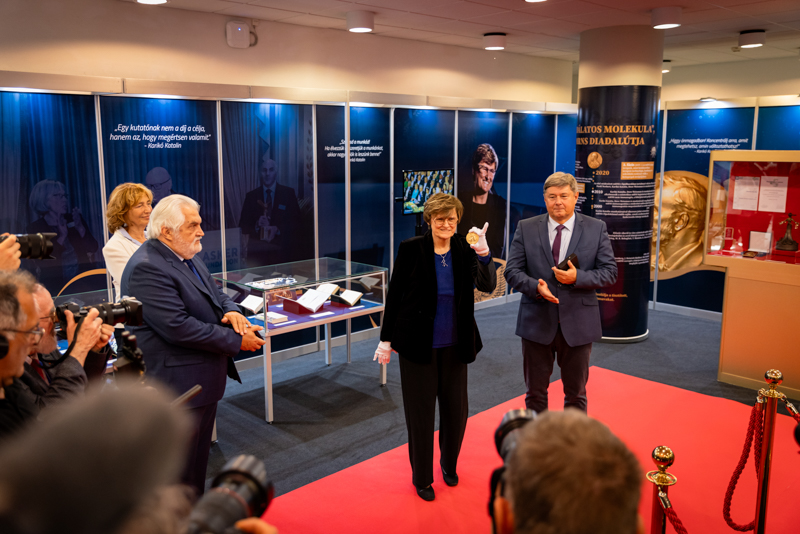
- The extraordinary journey, which is the subject of this exhibition, has led to a Nobel Prize that is now visible to the whole world. But I firmly believe that the results that Kati has achieved, which are now being tested in clinical trials around the world, will have an impact far greater than today. Kati is not only one of the Nobel Prize winners, but within 10-15 years she will be the subject of, so to say, English schoolchildren. By that time, what she has achieved will be so important to humankind, human welfare, that everyone will know her name. But until then, you can follow the extraordinary journey that Kati has taken in this exhibition. I would like to thank her once again for her generous donation to the University of Szeged, and also for the fact that I do not have to call her Professor Karikó, as she remains Kati Karikó –said Prof. Dr. Gábor Szabó, turning to the researcher.
Before her speech, Katalin Karikó looked around the TIK auditorium and addressed the young first: "I am one of you. Not now, because I haven't won any youth prizes lately," she smiled at the resulting cheerfulness, "only those meant for older ones, but I started my studies just like you here at the university, and I can honestly say that I wasn't that good. So if you think you're not good enough yet, you are probably right; but remember that this is a process, and the future is ahead of you! I hope that the medal that we have placed here, the Nobel Prize, will inspire you in some way, and perhaps the reward announced from the amount of the Nobel Prize will also encourage you to be the best student and - I am also addressing the teachers now - the best teacher who will receive a prize from it.
Amid the clicking of the cameras, Katalin Karikó then placed the Nobel Prize plaque in the glass cabinet in the middle of the exhibition hall.
The exhibition that Ilona Újszászi presented in 2023 as a travelling exhibition in several cities can also be seen in the vicinity of the famous prize. Her collaborator was photojournalist István Sahin-Tóth, who has been photographing the events of Katalin Karikó since 2021. The exhibition entitled Katalin Karikó's Journey to the Nobel Prize and Beyond will feature documents from the collection of the SZTE Klebelsberg Library, which were curated by Erika Csengődi, Katalin Farkas, Gyula Nagy, Anna Pálffy and Nikoletta Puskás.
The Móra Ferenc Museum also contributed to the concept of the exhibition through Csilla Szatmári.
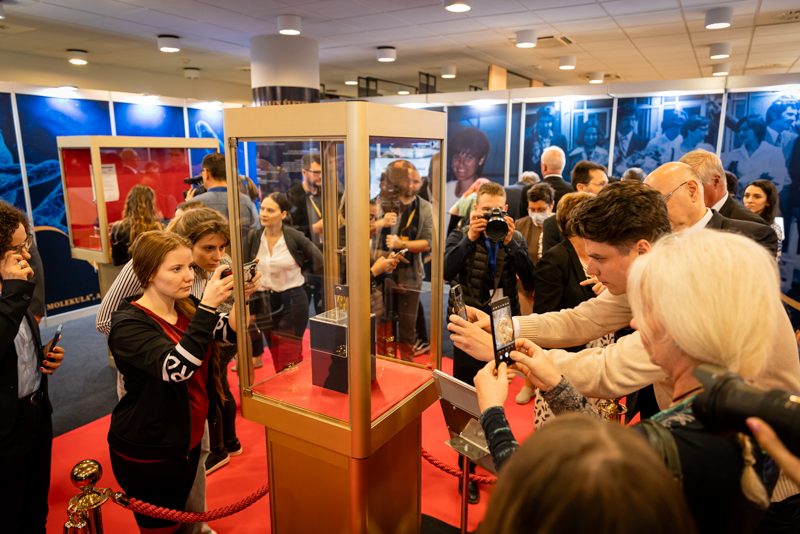
The exhibition is open during the opening hours of the József Attila Study and Information Centre of SZTE.
Panek Sándor
Fotók: Kovács-Jerney Ádám, Sahin-Tóth István
